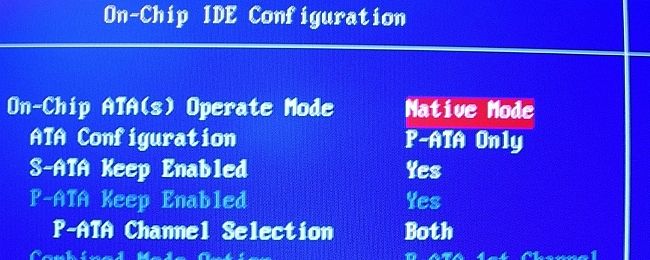When a person is just getting into computers, there is a lot of new vocabulary to learn and sometimes it can all get a bit confusing. Take the terms BIOS and Firmware, for instance, do they mean the same thing or are they different? Today's SuperUser Q&A post comes to the rescue to help a confused reader with terminology.
Today’s Question & Answer session comes to us courtesy of SuperUser—a subdivision of Stack Exchange, a community-driven grouping of Q&A web sites.
Photo courtesy of John C Bullas (Flickr).
The Question
SuperUser reader Koray Tugay wants to know what the difference between BIOS and Firmware is:
Could anyone elaborate on what the difference between BIOS and Firmware is please?
What is the difference between BIOS and Firmware?
The Answer
SuperUser contributors malakrsnaslava and Tonny have the answer for us. First up, malakrsnaslava:
BIOS is Firmware for computers. As you continue to read and learn about computers, you will gain understanding about BIOS, UEFI, EFI, and so on.
BIOS is an acronym for Basic Input/Output System and also known as System BIOS, ROM BIOS, or PC BIOS. It is a type of Firmware used during the booting process (power-on/start up) on IBM PC compatible computers. BIOS Firmware is built into PCs, and it is the first software they run when powered on. The name itself originates from the Basic Input/Output System used in the CP/M operating system in 1975.
Firmware is a combination of persistent memory, program code, and the data stored in it. Typical examples of devices containing Firmware are embedded systems such as traffic lights, consumer appliances, digital watches, computers, computer peripherals, mobile phones, and digital cameras. The Firmware contained in these devices provides the control program for the device.
Followed by the answer from Tonny:
As others have already stated, BIOS is the specific name for the motherboard Firmware in older PCs. New computers these days have a technically and somewhat different kind of Firmware called UEFI or EFI.
Please note that any computer will also contain other Firmware (besides BIOS/UEFI/EFI). Network cards, video cards, raid controllers, hard-drives, flash drives, SSDs, and sound cards (just to name a few) can all have Firmware embedded inside.
Weirdly enough, the Firmware for video cards is often called video BIOS. This is technically incorrect. BIOS is only appropriate for referring to the start up Firmware of the motherboard itself.
Have something to add to the explanation? Sound off in the comments. Want to read more answers from other tech-savvy Stack Exchange users? Check out the full discussion thread here.

